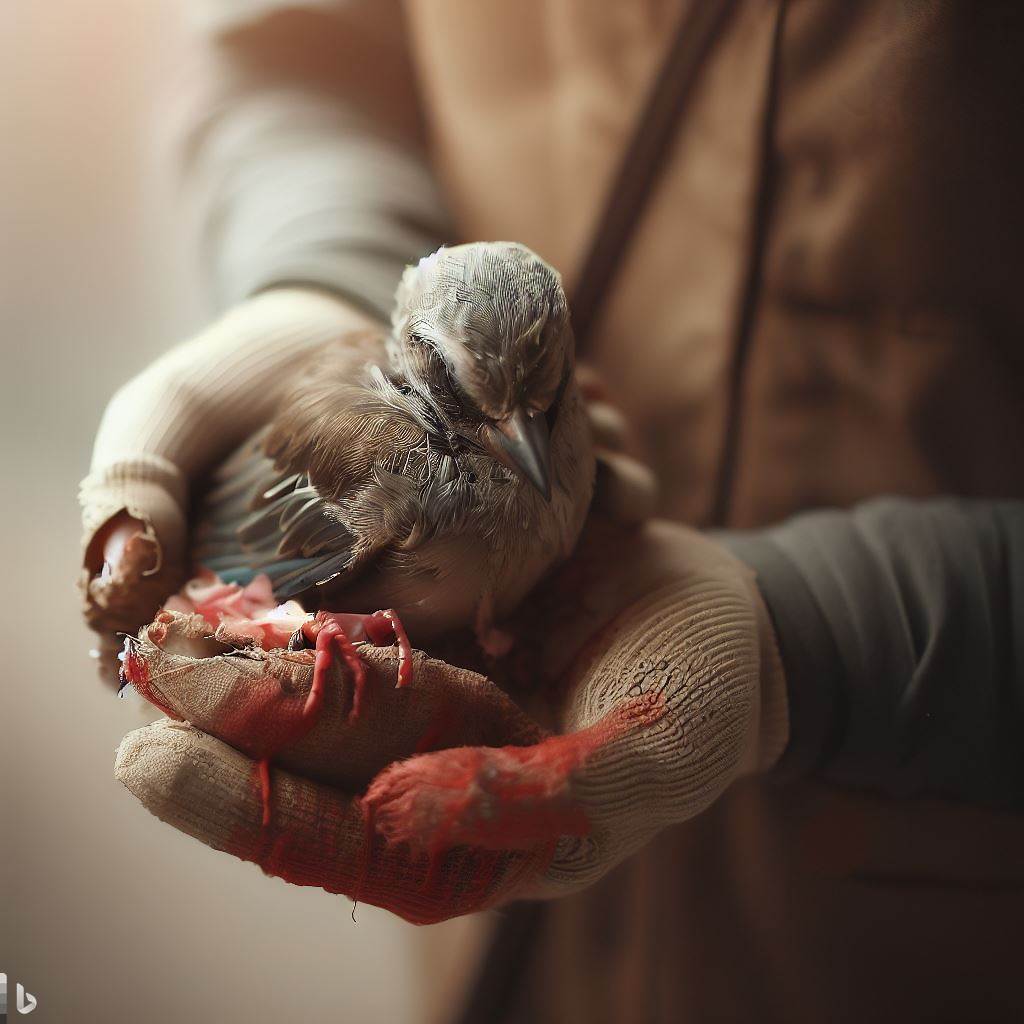As a rule injuries to wild birds happen in two ways, the most common being the impact of the bird with a window or some other immovable object. The second is a predator/prey situation usually involving a cat or dog. Some injuries are quite evident and others are impossible to determine by observation.The bird should be given a thorough examination as soon as possible. DO NOT place the bird in an air-conditioned room or one with a draft. DO NOT subject the bird to sudden or significant temperature changes. If signs of broken bones, paralysis, etc. are present, you need to make an appointment with a vet. There are also a number of diseases that birds can get. So, if it shows symptoms of a disease, make an appointment with a veterinarian. This is a hard call because symptoms presented could be either a disease, shock or the aftermath of an attack. After an appraisal of the bird has been made or until you can get it to a vet, there are some things you can do.
Many birds will be chilled, down-right cold or dehydrated. These are the situations we are going to address. The body temperature of a bird is about 100 degrees. DO NOT feed a cold or chilled bird because they can’t digest the food. The first task will be to raise their body temperature.
To warm the bird: use your hands; hold the bird under your shirt next to your body; use a heating pad set on low (placed under a box or aquarium); suspend a light bulb over the bird at a safe distance. DO NOT warm the bird too quickly. It could die of hypothermia if the outer layer of flesh warms too quickly for the inner colder layers to supply them with much needed blood and oxygen. Be sure to heat only part of the box or aquarium, leaving room for the bird to move to a cooler area once it is warmed. Example: place the box on half of the heating pad leaving one side cooler.
After the bird is warm you will need to determine whether or not it is dehydrated. While dehydration is easy to spot in young birds, it can be difficult in fully feathered birds. Check to see if the bird is thin, weak, or listless. If, after the skin is lightly pinched between your thumb and fore finger, it stays up, the bird does not have enough moisture and should be given a re-hydration solution. The bird can be given pedialyte or gaterade; warmed to body temperature or 100 degrees. If you don’t have access to either of these you can use a home-made solution consisting of 1 teaspoon salt, 3 tablespoons sugar and 1 quart warm water. A dehydrated bird needs to be given fluid every 15-30 minutes with a syringe, pipette or eye dropper. Be careful not to aspirate the bird by getting it in the air tube or lungs. The amount will vary depending on the size of the bird and the severity of the dehydration. In extreme cases of dehydration it could be necessary to inject fluid, lactated ringers, just under the skin of the bird. This is usually done in the shoulder area of the back or the top of the leg. Keep it warm and when it is revitalized, start feeding it. What you feed will depend on the type of bird.
The quicker the bird is returned to the wild, the better its chances of survival. I do not mean that the bird should be fed and released. What I do mean is that you should NOT keep the bird longer than necessary. You do not want it to become dependent upon you or any other human.
In many states, no native animals may be kept other than those that are not releasable and then only if you have a license. If a bird is found that requires more than simple first aid, it is best to contact a local rehabilitator. In order to locate licensed rehabilitators in your area, contact your local Animal Control Office or your State Fish and Game Office. The license is issued by the state and they should have a list complete with telephone numbers.

